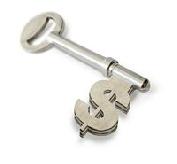
 |
|
| Financial Terms | |
| Record accuracy |
|
Information about financial, finance, business, accounting, payroll, inventory, investment, money, inventory control, stock trading, financial advisor, tax advisor, credit.
Main Page: accounting, inventory control, credit, inventory, finance, money, investment, business, |
Definition of Record accuracy
Record accuracyThe variance between book and on-hand quantities, expressed
Related Terms:Date of recordDate on which holders of record in a firm's stock ledger are designated as the recipients of Holder-of-record dateThe date on which holders of record in a firm's stock ledger are designated as the Record date1) Date by which a shareholder must officially own shares in order to be entitled to a dividend. Record dateThe date used to decide which shareholders will receive the dividend. The owners of the shares at the end of this day are entitled to the dividend. job cost recordsee job order cost sheet internal controlany measure used by management to protect Announcement datedate on which particular news concerning a given company is announced to the public.  Call dateA date before maturity, specified at issuance, when the issuer of a bond may retire part of the bond Conflict between bondholders and stockholdersThese two groups may have interests in a corporation that Date of paymentdate dividend checks are mailed. Dates conventionTreating cash flows as being received on exact dates - date 0, date 1, and so forth - as Declaration dateThe date on which a firm's directors meet and announce the date and amount of the next Effective dateIn an interest rate swap, the date the swap begins accruing interest. EquityholdersThose holding shares of the firm's equity. Expiration dateThe last day (in the case of American-style) or the only day (in the case of European-style) Extension dateThe day on which the first option either expires or is extended.  Ex-dividend dateThe first day of trading when the seller, rather than the buyer, of a stock will be entitled to Ex-rights dateThe date on which a share of common stock begins trading ex-rights. Fixed-datesIn the Euromarket the standard periods for which Euros are traded (1 month out to a year out) are Invoice dateUsually the date when goods are shipped. Payment dates are set relative to the invoice date. Notification dateThe day the option is either exercised or expires. Payment dateThe date on which each shareholder of record will be sent a check for the declared dividend. Projected maturity dateWith CMOs, final payment at the end of the estimated cash flow window. Record date1) date by which a shareholder must officially own shares in order to be entitled to a dividend. Settlement dateThe date on which payment is made to settle a trade. For stocks traded on US exchanges, Shareholders' equityThis is a company's total assets minus total liabilities. A company's net worth is the Shareholders' letterA section of an annual report where one can find jargon-free discussions by  StakeholdersAll parties that have an interest, financial or otherwise, in a firm - stockholders, creditors, Stockholder equityBalance sheet item that includes the book value of ownership in the corporation. It Stockholderholder of equity shares in a firm. Stockholder's booksSet of books kept by firm management for its annual report that follows Financial Stockholder's equityThe residual claims that stockholders have against a firm's assets, calculated by Trade dateIn an interest rate swap, the date that the counterparties commit to the swap. Also, the date on Value dateIn the market for Eurodollar deposits and foreign exchange, value date refers to the delivery date RATE OF RETURN ON STOCKHOLDERS’ EQUITYThe percentage return or profit that management made on each dollar stockholders invested in a company. Here’s how you figure it: RATIO OF DEBT TO STOCKHOLDERS’ EQUITYA ratio that shows which group—creditors or stockholders—has the biggest stake in or the most control of a company: STOCKHOLDERS’ (OR OWNERS’) EQUITYThe value of the owners’ interests in a company. Shareholders’ fundsThe capital invested in a business by the shareholders, including retained profits. Shareholder valueIncreasing the value of the business to its shareholders, achieved through a combination of Declaration dateThe date on which the board of directors has declared a dividend. Payment dateThe date established for the payment of a declared dividend. Record dateThe date used to decide which shareholders will receive the dividend. The owners of the shares at the end of this day are entitled to the dividend. Shareholders' equityThe total amount of contributed capital and retained earnings; synonymous with stockholders' equity. Stockholders' equityThe total amount of contributed capital and retained earnings; synonymous with shareholders’ equity. stockholders' equity, statement of changes inAlthough often considered Coupon datesThe dates when the coupons are paid. Typically a bond pays Issue dateThe date a security is first offered for sale. That date usually Maturity dateThe date when the issuer returns the final face value of a bond Settlement dateThe date when money first changes hands; i.e., when a buyer StockholderA person or entity that owns shares in a corporation. ex-dividend datedate that determines whether a stockholder is entitled to a dividend payment; anyone holding stock before this date is entitled to a dividend. stakeholderAnyone with a financial interest in the firm. Consolidated Omnibus Budget Reconciliation Act (COBRA)A federal Act Shareholders' EquityThe residual interest or owners' claims on the assets of a corporation PolicyholderThis is the person who owns a life insurance policy. This is usually the insured person, but it may also be a relative of the insured, a partnership or a corporation. There are instances in marriage breakup (or relationship breakup with dependent children) where appropriate life insurance on the support provider, owned and paid for by the ex-spouse receiving the support is an acceptable method of ensuring future security. Maturity Datedate on which a debt is due for payment. ShareholderOwner of one or more shares of stock in a corporation. Shareholder's EquityRepresents the total assets of a corporation less liabilities. Issue Datedate on which a policy is approved. Policy Datedate on which the insurance company assumes responsibilities for the obligations outlined in a policy. Valuation Datedate on which valuation occurs. Best-interests-of-creditors testThe requirement that a claim holder voting against a plan of reorganization Call optionAn option contract that gives its holder the right (but not the obligation) to purchase a specified Cumulative votingA system of voting for directors of a corporation in which shareholder's total number of Liquidation rightsThe rights of a firm's securityholders in the event the firm liquidates. Put bondA bond that the holder may choose either to exchange for par value at some date or to extend for a Put provisionGives the holder of a floating-rate bond the right to redeem his note at par on the coupon Straight votingA shareholder may cast all of his votes for each candidate for the board of directors. WarrantA security entitling the holder to buy a proportionate amount of stock at some specified future date BOOK VALUE OF COMMON STOCKThe theoretical amount per share that each stockholder would receive if a company’s assets were sold on the balance sheet’s date. Book value equals: Call OptionA contract that gives the holder the right to buy an asset for a Put OptionA contract that gives the holder the right to sell an asset for a Callable bondA bond that allows the issuer to buy back the bond at a Puttable bondA bond that allows the holder to redeem the bond at a SwaptionA swap option; an option on an interest-rate swap. The option gives cumulative votingVoting system in which all the votes one shareholder is allowed to cast can be cast for one candidate for the board of directors. Accumulated Other Comprehensive IncomeCumulative gains or losses reported in shareholders' EndowmentLife insurance payable to the policyholder, if living on the maturity date stated in the policy, or to a beneficiary if the insured dies before that date. For example, some Term to age 100 policies offer the option of taking the face amount of the policy as a cash payout at age 100 if the policyholder is still alive and paying all required income taxes on the amount received or leaving the policy to pay out upon death whereupon the payout is tax free. Related to : financial, finance, business, accounting, payroll, inventory, investment, money, inventory control, stock trading, financial advisor, tax advisor, credit. |